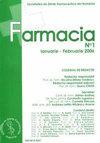PERCEPTIONS OF FRONTLINE HEALTHCARE PROFESSIONALS ON COVID-19 VACCINATION
IF 1.4
4区 医学
Q4 PHARMACOLOGY & PHARMACY
引用次数: 0
Abstract
Emerging infectious diseases (EIDs) and their determinants are attracting increasing attention from scientists, with approximately 75% of EIDs being zoonotic. Among these pathogens are viruses belonging to the Coronaviridae family. Until 2002, CoVs were primarily studied for scientific or veterinary purposes. However, the world's view on the virulence of CoVs changed in 2002 when a zoonotic betacoronavirus named SARS-CoV appeared in southern China and caused a global epidemic with over 8,000 cases. Ten years later, in the Middle East, another zoonotic betacoronavirus, MERS-CoV, emerged and caused 2,521 cases. A new highly contagious CoV named Severe Acute Respiratory Syndrome Coronavirus 2 (SARS-CoV-2) emerged in 2019, causing the largest pandemic of the modern era known as coronavirus disease 2019 (COVID-19). Vaccination is one of the most effective methods to reduce the risk of severe illness, hospitalization, and death. The main objective of the study was to evaluate the acceptability of the COVID-19 vaccine among healthcare workers, describe the main adverse reactions, and identify the need for medication administration based on the severity of the adverse reactions manifested.Copyright © 2023, Romanian Society for Pharmaceutical Sciences. All rights reserved.一线医护人员对新冠肺炎疫苗接种的认识
新发传染病及其决定因素越来越受到科学家的关注,约75%的传染病是人畜共患的。这些病原体中有属于冠状病毒科的病毒。直到2002年,CoV主要用于科学或兽医目的。然而,世界对冠状病毒毒力的看法在2002年发生了变化,当时一种名为SARS冠状病毒的人畜共患β冠状病毒出现在中国南部,并导致了8000多例的全球疫情。十年后,在中东,另一种人畜共患β冠状病毒MERS-CoV出现,并导致2521例病例。2019年出现了一种新的高度传染性冠状病毒,名为严重急性呼吸综合征冠状病毒2(SARS-CoV-2),引发了现代最大的冠状病毒病2019(新冠肺炎)。接种疫苗是降低重症、住院和死亡风险的最有效方法之一。该研究的主要目的是评估新冠肺炎疫苗在医护人员中的可接受性,描述主要不良反应,并根据所表现的不良反应的严重程度确定用药需求。版权所有©2023,罗马尼亚药物科学学会。保留所有权利。
本文章由计算机程序翻译,如有差异,请以英文原文为准。
求助全文
约1分钟内获得全文
求助全文
来源期刊

FARMACIA
医学-药学
CiteScore
2.40
自引率
50.00%
发文量
59
审稿时长
6-12 weeks
期刊介绍:
FARMACIA publishes original research papers, invited topical reviews and editorial commentaries and news, with emphasis on conceptual novelty and scientific quality. Main research areas are focused on: pharmacology, toxicology, medicinal chemistry, biopharmacy, drug design, drug delivery, personalized medicine, nanostructures, nutraceuticals, biochemistry and biotechnology. Manuscripts submitted to the Journal are only accepted after the peer review precess. The papers should have not been published in any other journal. The recommendations of the Declaration of Helsinki, for humans, and the International guidelines as accepted principles for the use of experimental animals should be followed.
 求助内容:
求助内容: 应助结果提醒方式:
应助结果提醒方式:


